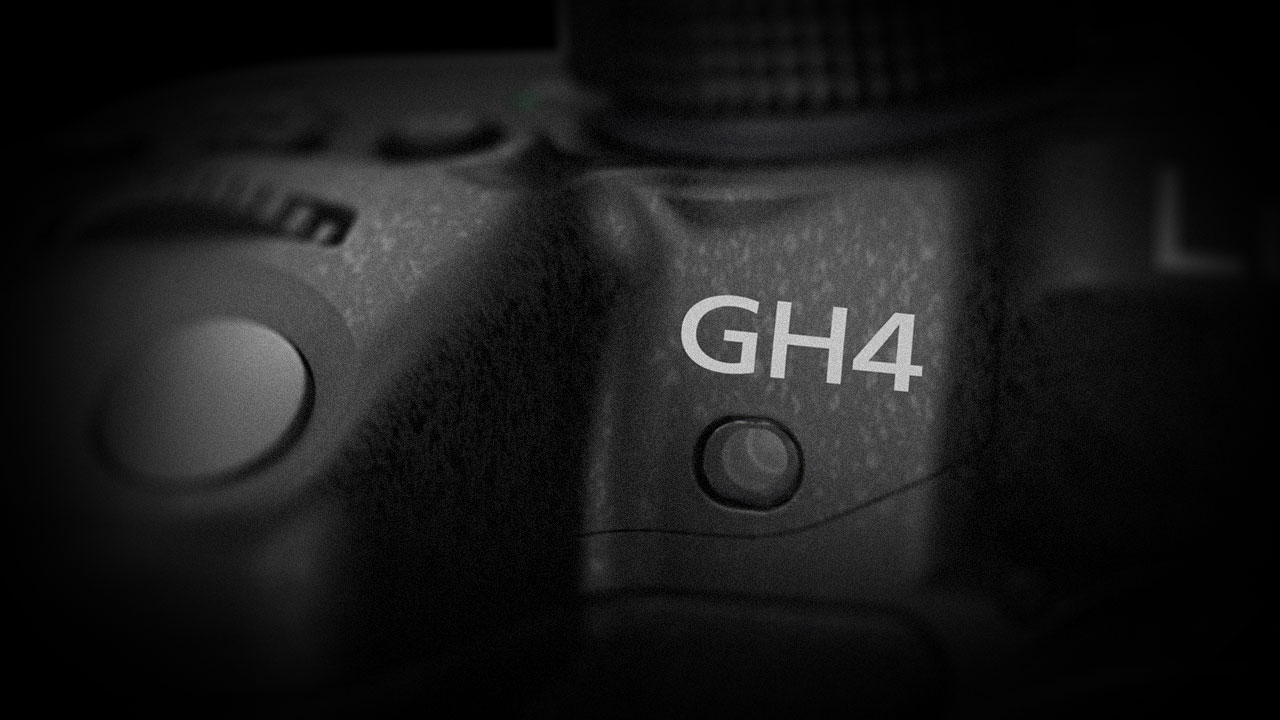The Panasonic Lumix GH3 is a camera I often use for video alongside the Panasonic AF101 camcorder for my filmmaking work. While its performance for stills is also very good, I’ve always considered it more interesting for its video capabilities. The Lumix series certainly has the most advanced hybrid cameras (still and video) on the market and the GH3 video quality can rival well-known Canon DSLRs.
On the GH3, Panasonic implemented some very welcome features such as a mic input and an ALL-I 72mbps video codec. This move made me all the more certain that the successor would have a number of new improvements especially for filmmakers, and indeed, that turns out to be the case. In particular, we have a new image sensor and Venus engine processor, and though we have yet to test them and see the results, there is no doubt of Panasonic’s willingness to push the boundaries of photography and video.
As with the GH3, I actually find the Lumix GH4 way more exciting for its video features than for its stills. Yes, this the my filmmaker side of me writing!
The most complete MILC body for filmmakers
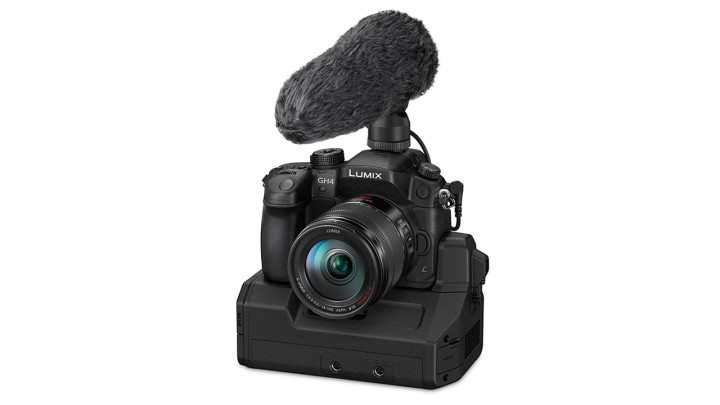
I always wondered why Panasonic didn’t develop their large sensors camcorders further. The Panasonic AF100 was the first real affordable video camera with a large sensor, not merely a DSLR that shoots great video. At the time, what Panasonic did was smart: the sensor was already there (from the GH1), as was the technology since Panasonic produces broadcast and professional camcorders. But since its release three years ago, nothing has emerged to replace that camera, while the competition, like Sony and Canon, have started to release large sensor cameras along with their HDSLRs.
I guess that nagging question in the back of my mind found an answer today in the form of the GH4.
If we take a look at all the new features and specs the GH4 has to offer for video shooting, the GH3 suddenly looks very dated. The most notorious addition is the 4K format: the GH4 can record at 4k resolution (4 times Full HD) up to 30p at 200mpbs with an ALL-I codec. In 24p mode, you can also get a cinema 4K aspect ratio (but the crop factor is increased by 1.2).
If you have a 4k display or an apple retina display, you can enjoy at full resolution one of the Panasonic promotional videos below (make sure to select 2160p in the player settings). The images look almost tridimensional and the details are impressive.
4K isn’t something new and there are already several professional cameras that can shoot 4K. The first consumer cameras also appeared this year but in the case of the GH4, it is an important step not only because of its versatility but also because it is a professional 4K camera at a reasonable price. Actually, the price hasn’t been announced yet but rumours suggest it will be around 1500 euros.
So, what are the other aspects that make this camera very appealing for professional filmmakers, besides 4K. Well, first of all the ALL-I 200mbps codec is available for all formats, including HD and Full HD. In Full HD, the camera can register up to 96 frames per seconds, which is very interesting for slow motion. The only real capable slow motion camera is the Sony FS700 (max 200fps) but it costs 7000$. I think you can see my point here.
Panasonic also implemented more settings in the menu: we get cine-like gamma curves (like Panasonic broadcast cameras), master pedestal, 1kHZ color bars test tone, luminance level, synchro scan, time code, center marker and zebra patterns.
The HDMI port can output a 4:2:2 10 bit signal, which is great if you want to record the footage with better compression on an external device. When that signal is enabled, you cannot record to the SD card however.
The new external module has all the professional connectors you need
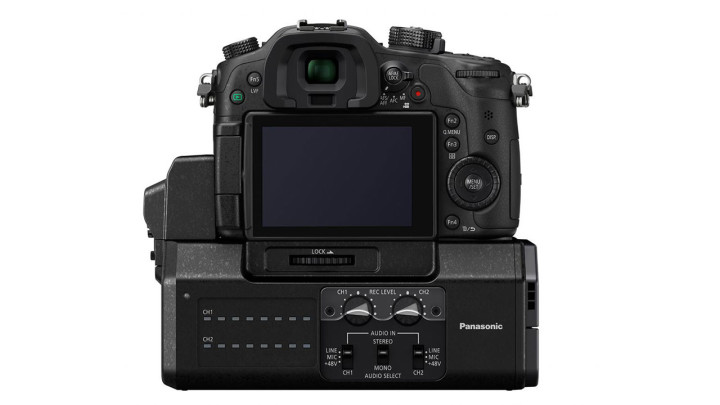
It might not look like the sexiest piece of equipment we have seen in the audiovisual industry, but the new XLR-HD SDI module is very interesting.
Usually professional camcorders incorporate broadcast connections such as balanced 48kHZ XLR for audio recording and SDI output connectors that are more secure and reliable than HDMI. But that additional hardware needs space, space you won’t find on DSLR body. I always wondered why no one ever came up with this kind of solution before, but again, I feel this is related to the fact that Panasonic didn’t develop large sensor video cameras and instead put all its effort into the Lumix line.
Panasonic eventually had to come up with a solution that would satisfy the demands of filmmakers.
This module has 2 XLR inputs and 4 HD SDI outputs including 3G SDI output. Apparently those connectors can output an uncompressed 4K video signal. You also have a Time Code input and a 4 Pin DC In power solution. On the other side, you have audio level dials and audio meters. In short, with this module the GH4 becomes a 100% professional broadcast video camera which lacks nothing compared to the competition. I wonder how much this module will cost – let’s hope we won’t be met with an unpleasant surprise.
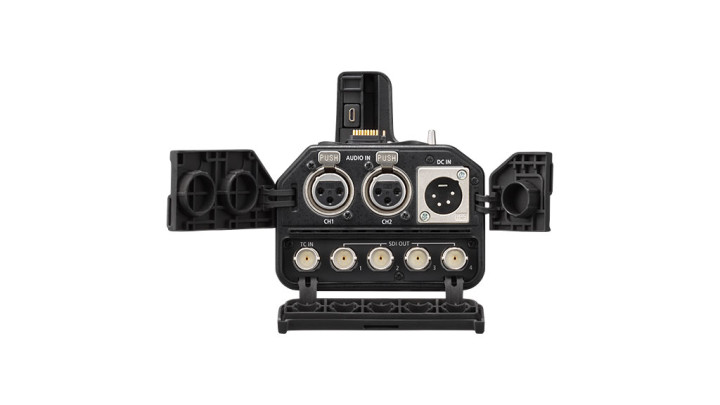
Despite being a very powerful accessory for the camera, I am waiting to try it and see how easy to use it is in a real world. Apparently, it needs a power supply, and seeing the connection it has, you will need professional anton bauer batteries to keep it running. First thing to add.
Then, ergonomically speaking, it is clear that it hasn’t been made for hand-held use, which is fine if you are shooting indoors on a tripod in a controlled situation, but if you only need the XLR inputs for a lavallier microphone for example, it could become more of a pain to use, especially if you are outside without the possibility to stay connected to a power source.
I wonder why Panasonic didn’t propose an audio module only and a complete solution like the one above.
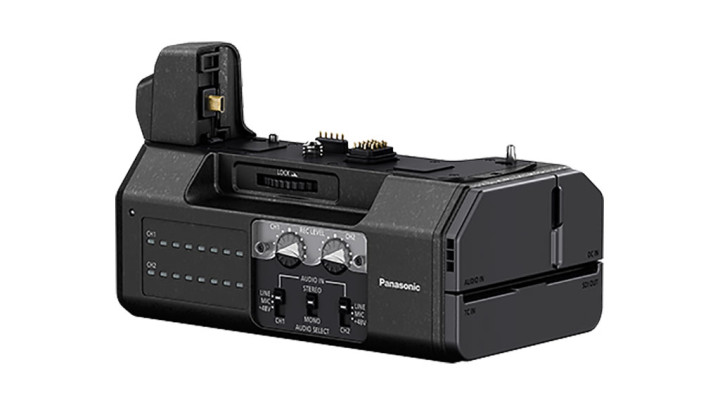
Moreover, since for serious shooting this kind of camera get rigged with all sort of stuff (rode bars, follow focus, etc..) I wonder how this big fat module is going to fit. I guess we will know the answers as soon as some serious filmmakers decide to try it with various configurations (Philip Bloom, perhaps? :-)).
All the rest: photography, speed, power!
Let’s put aside video for one second and talk about the new GH4 for still photography. The first thing to say is that it has a brand new 16mp CMOS sensor. The sensitivity range and resolution is the same as the GH3, but I wonder how much better this sensor will perform. The GX7 sensor already showed some improvements and I find it very similar to the OM-D E-M1 sensor. Will this GH4 sensor be the best MFT sensor on the market? I am very curious to try it!
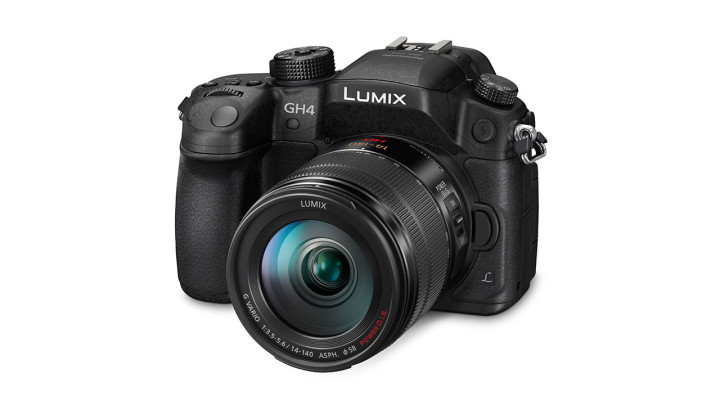
The camera also includes very impressive specs in terms of performance and speed. The continuos shooting mode goes up to 12fps in AF-S mode and 7.5 in AF-C mode which makes it the fastest MFT camera ever. The image processor is also new and works in tandem with the new Quad-Core CPU. That’s why the camera can record even 8mp images while shooting 4K. The sensor is apparently 50% faster than the GH3 sensor and this should also reduce the rolling shutter effect while shooting video.
The camera is still limited to a contrast detection AF system, but adds an interesting functionality called DFD (Depth from Defocus). Basically, the camera calculates the distance to the subject by evaluating two images with different depths of field. It then adds that information to the characteristics of the lens it has mounted on it. All this is done very quickly and apparently the camera can focus in a mere 0.07s. Impressive. I wonder if the DFD system will also work with MFT Olympus lenses as well, or Lumix only.
Ergonomically speaking, the GH4 is very similar to the GH3 (and all the accessories, including the battery grip are compatible). The EVF is new and has more resolution (2,359K) with 0,67x magnification and a 100% field of view coverage.
Finally, the camera is weather-sealed, has WiFi and NFC capabilities, and also includes some nice features we appreciated on the GX7 such as a completely silent shutter (electronic), time-lapse and stop motion animation.
Conclusion
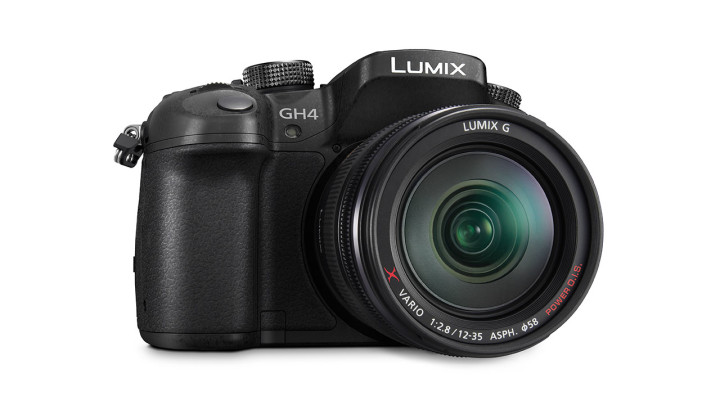
The Panasonic Lumix GH4 is certainly a major entry this year and a camera to follow with great interest. The specs and innovative additions for video shooting certainly make it very appealing for both photography and filmmaking users. I personally will consider it for my video work, as 4K has some great advantages and is also becoming the next big format after HD. The camera seems to have all we need for shooting great videos with the best specs possible.
As for stills, I am certainly curious to see how the new sensor and the DFD AF system work.
Will the GH4 take its place as the best MFT camera so far? What do you think?
